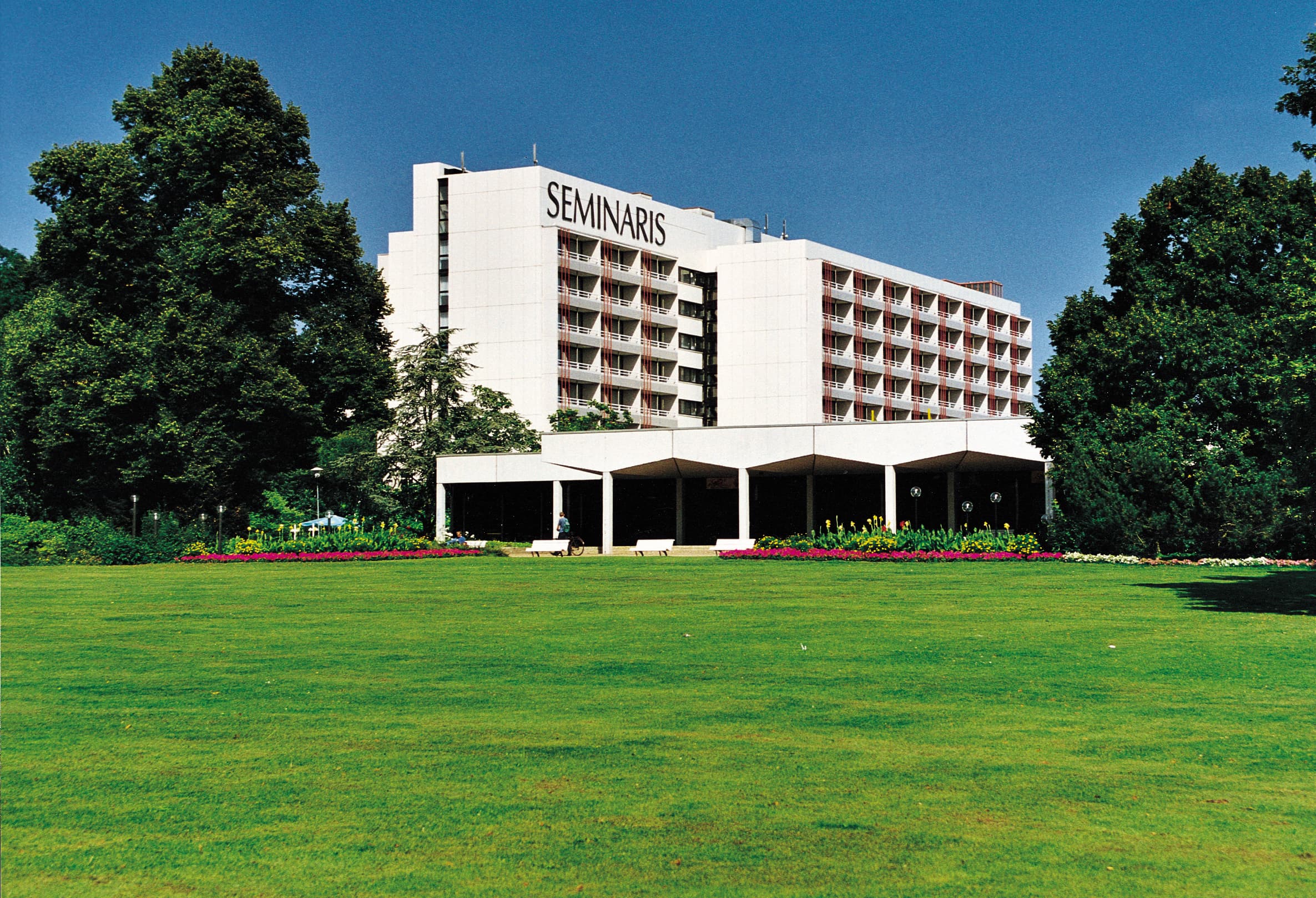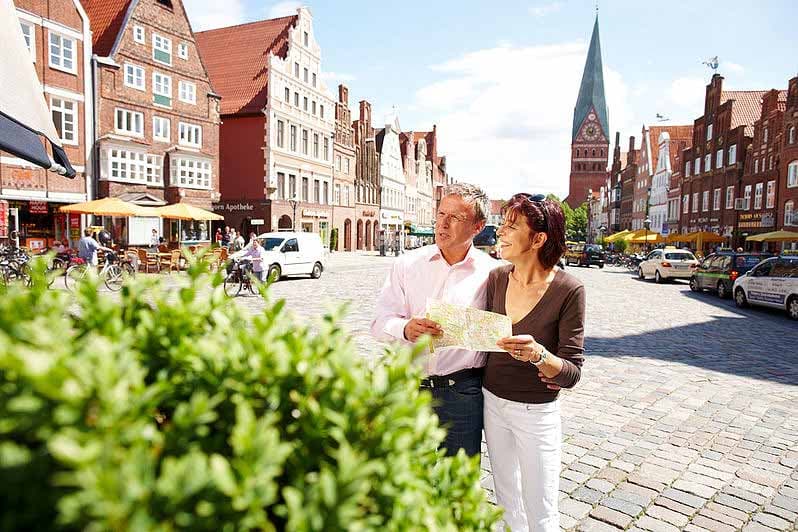
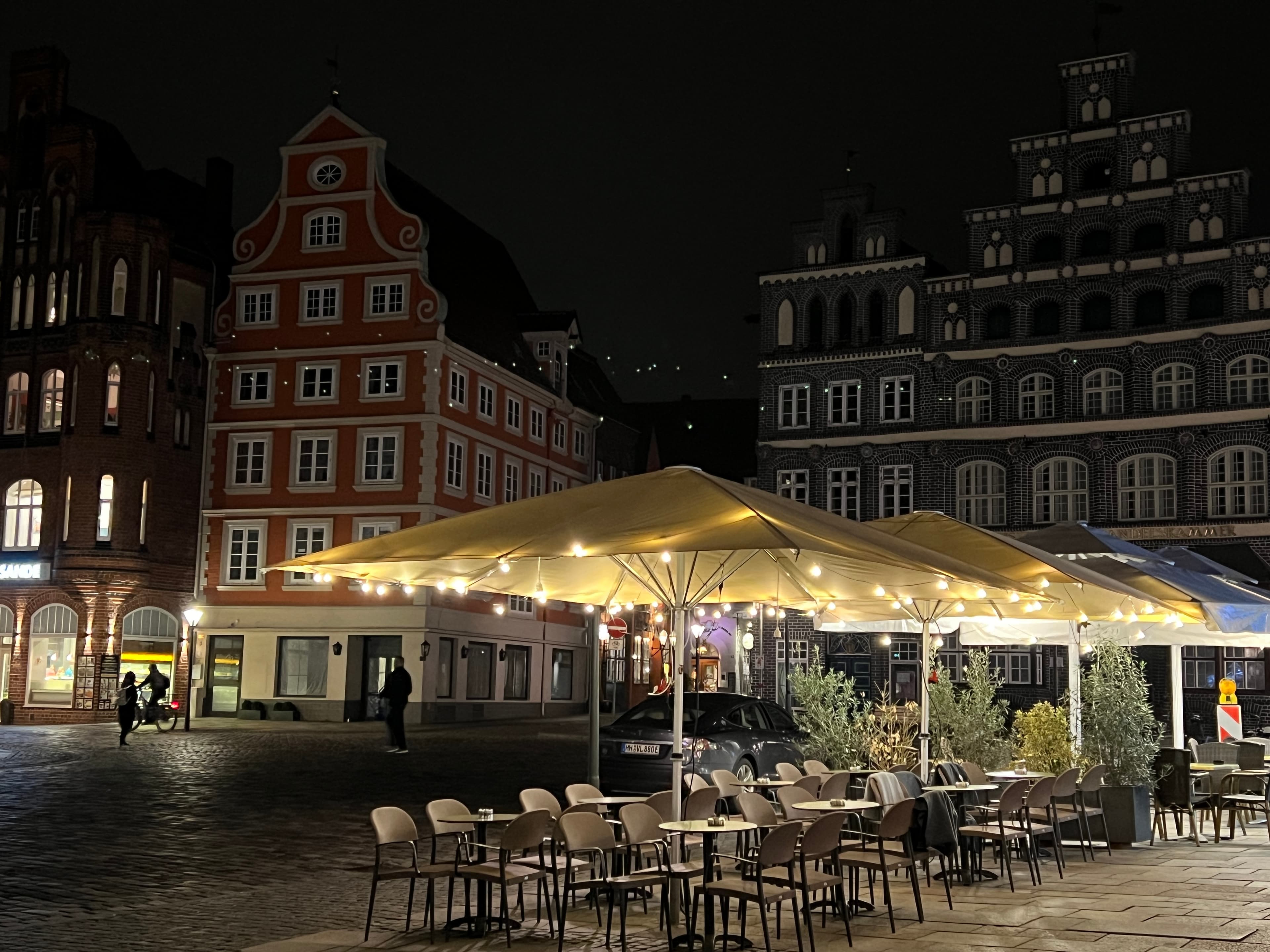
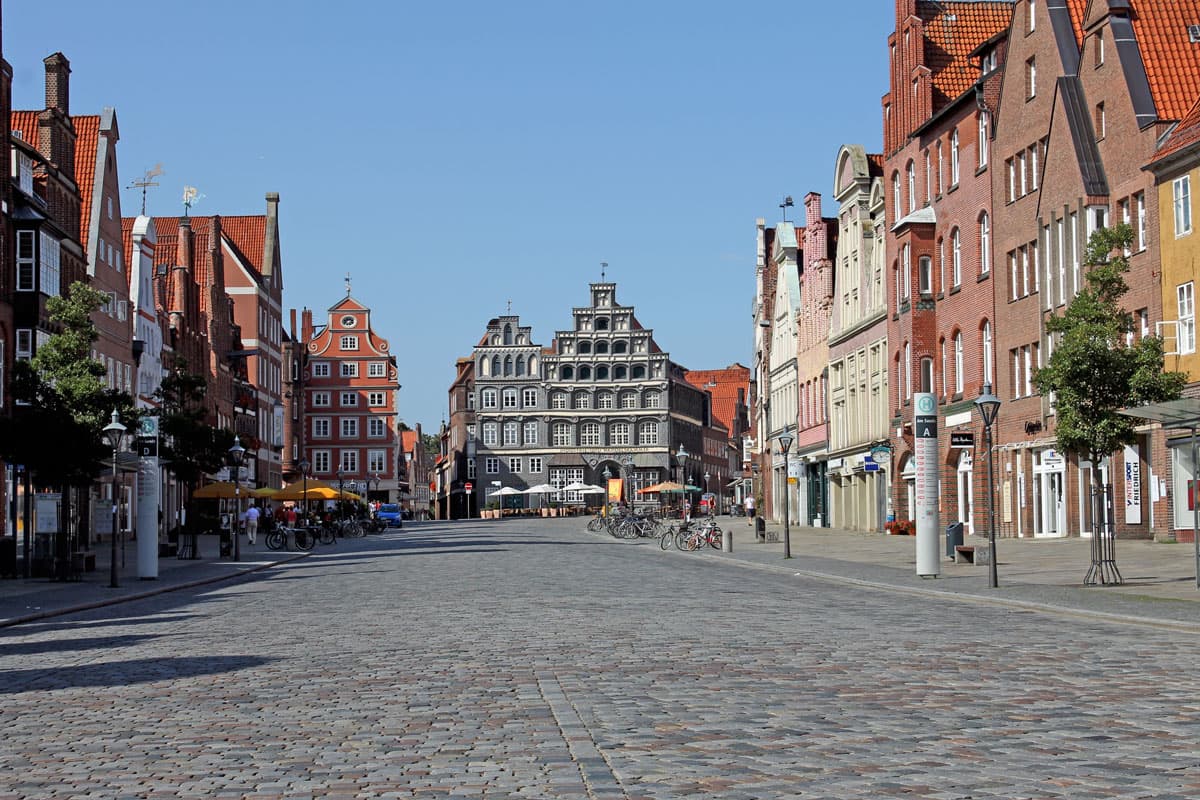
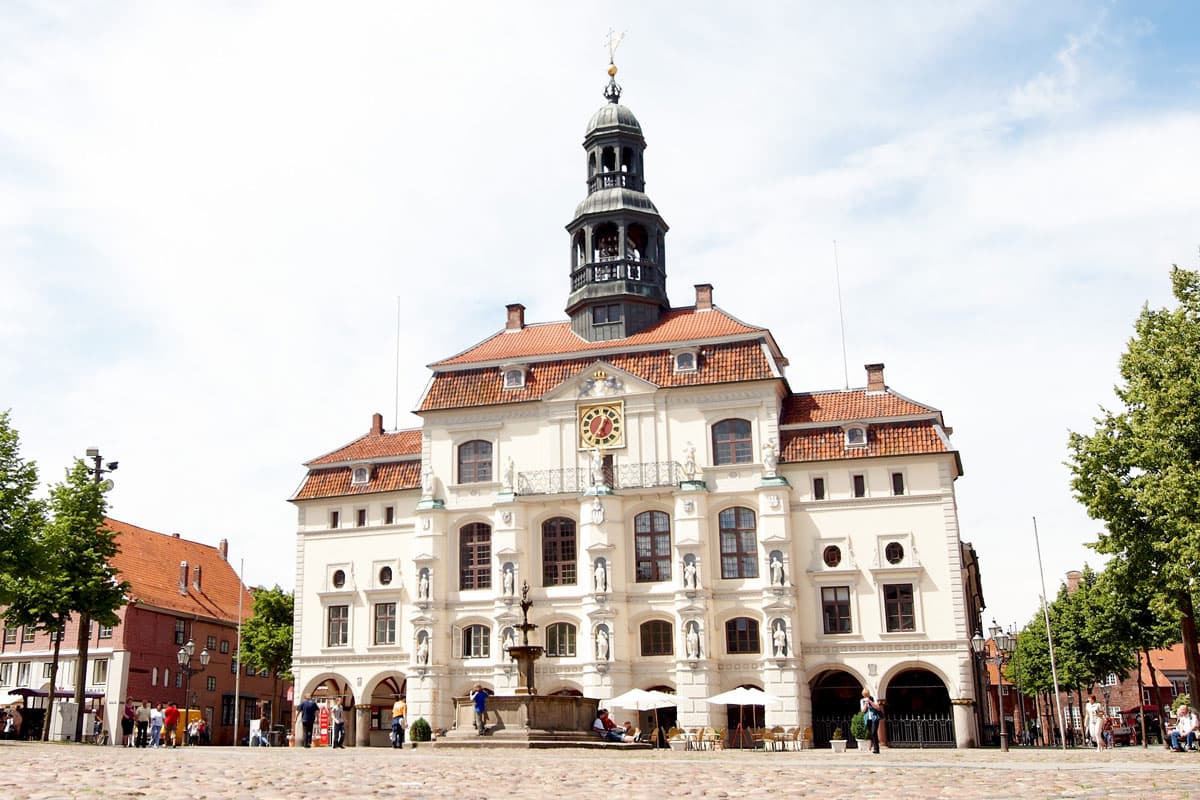
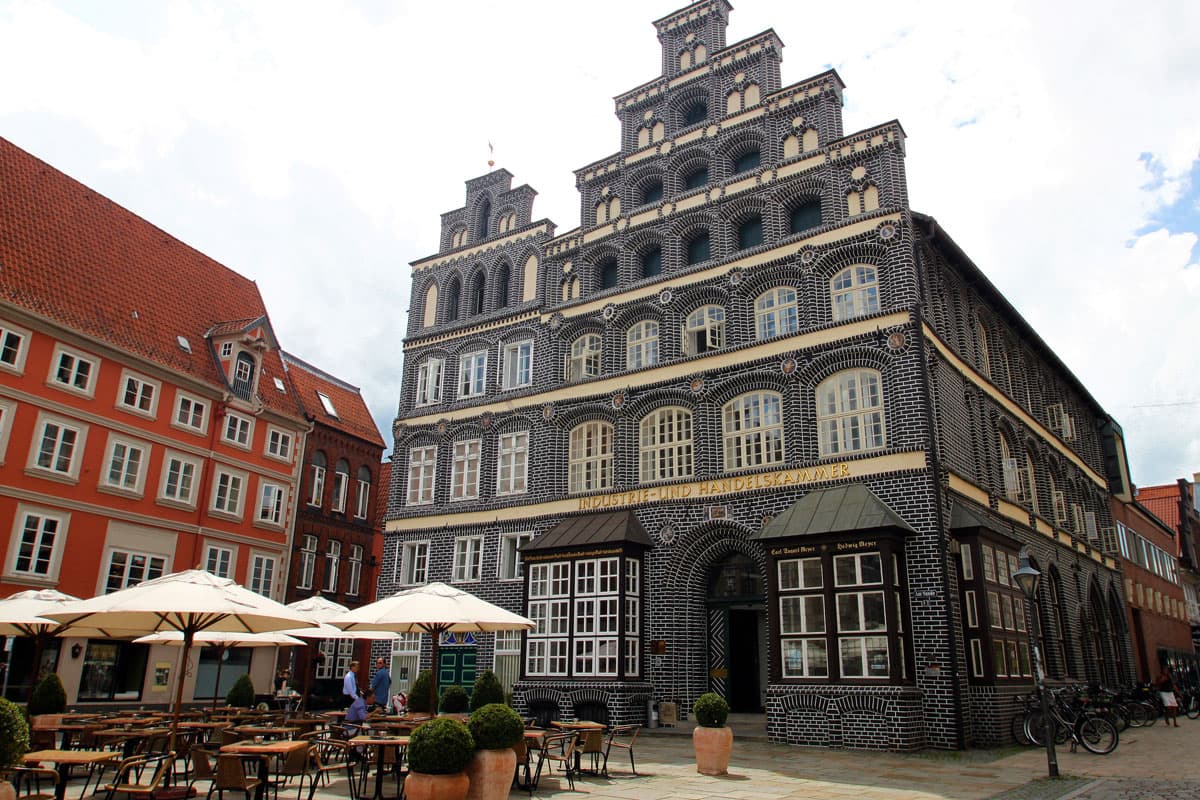
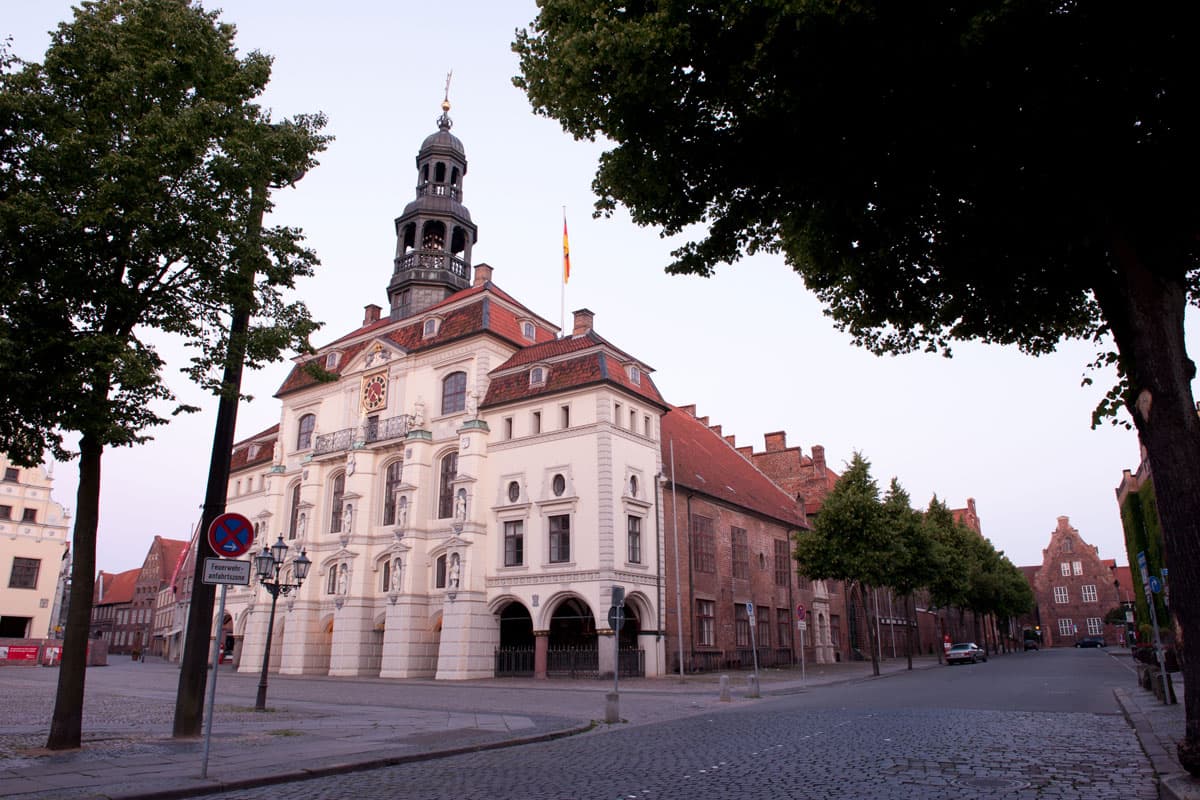
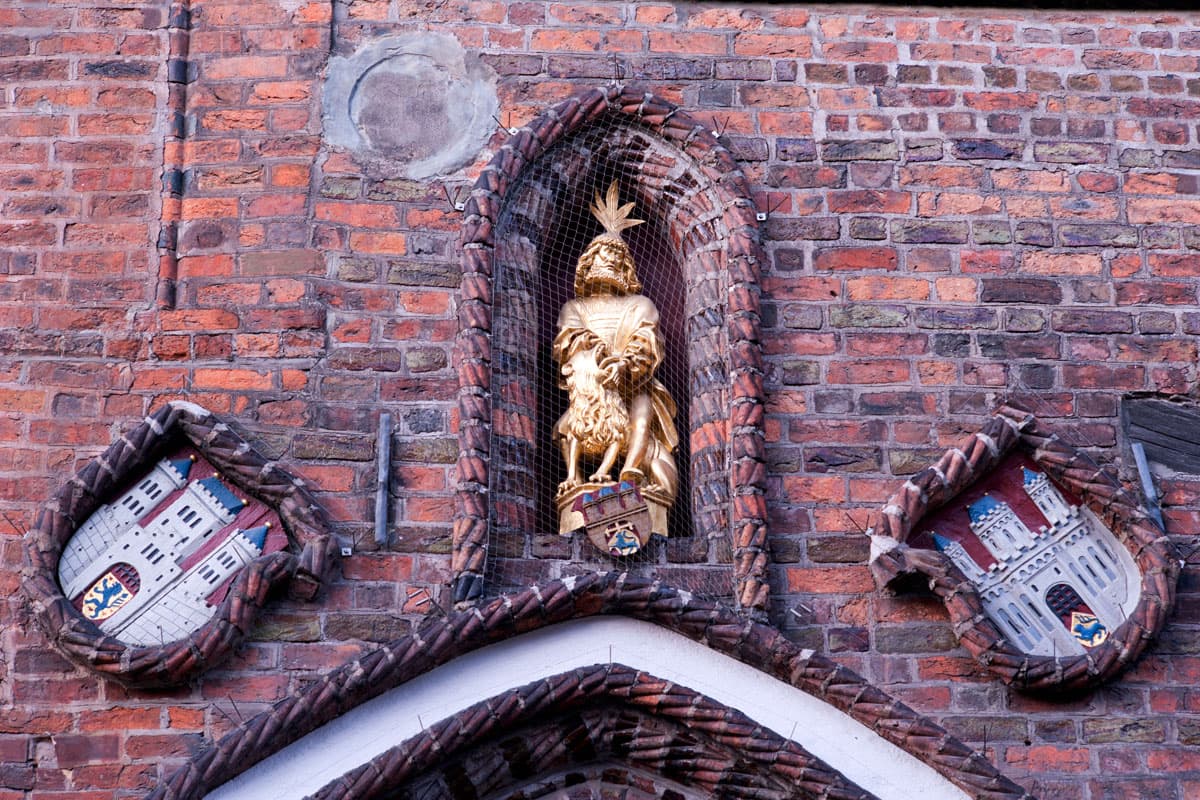
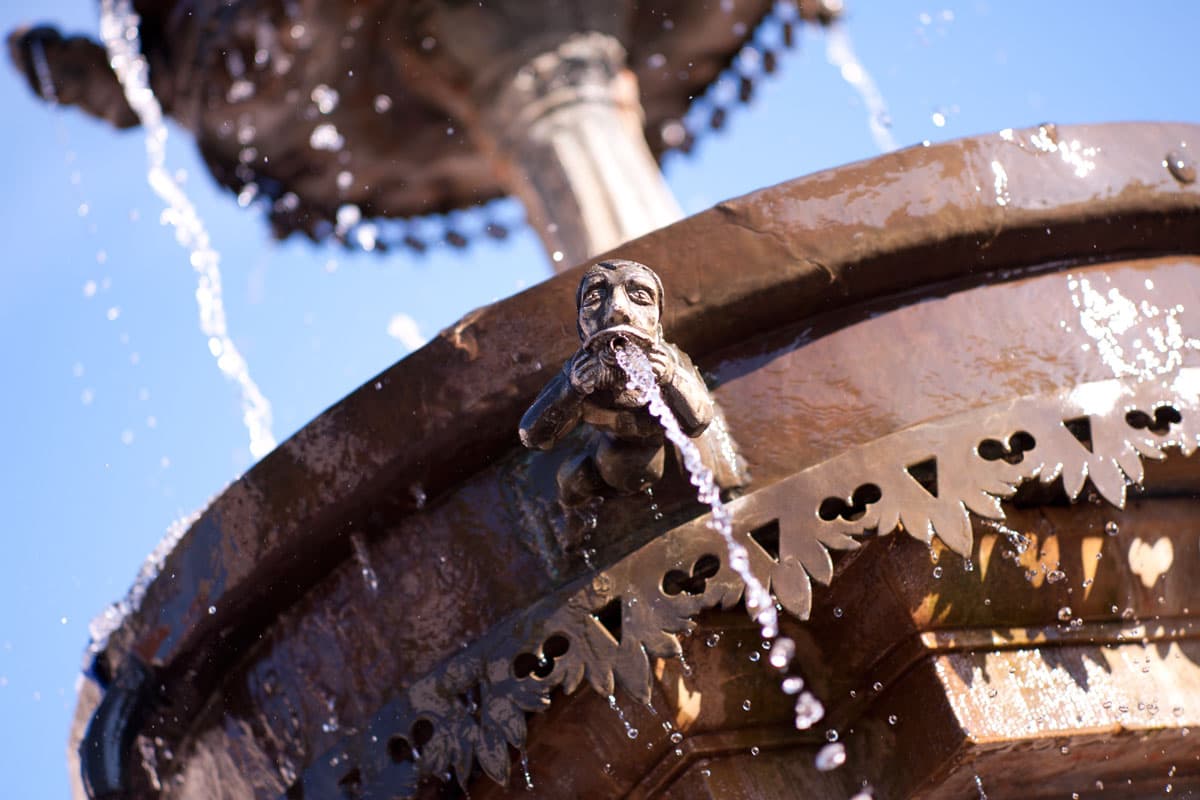
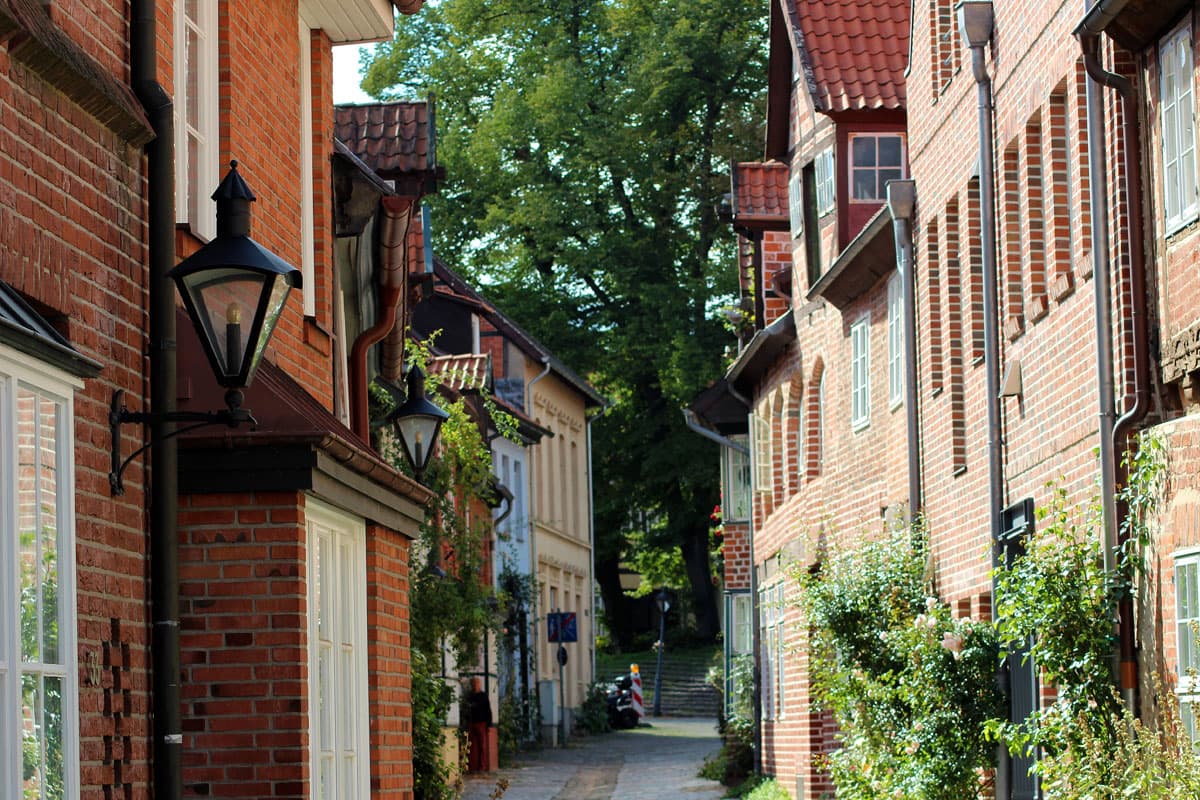
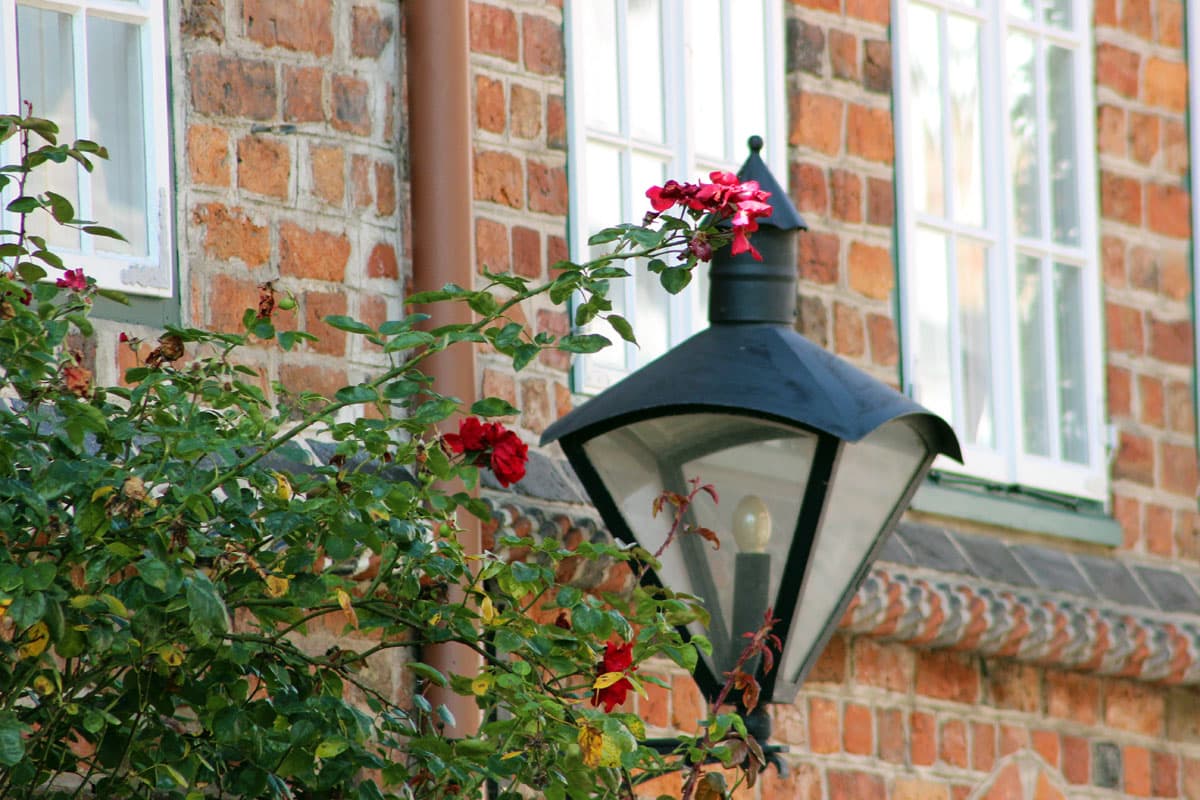
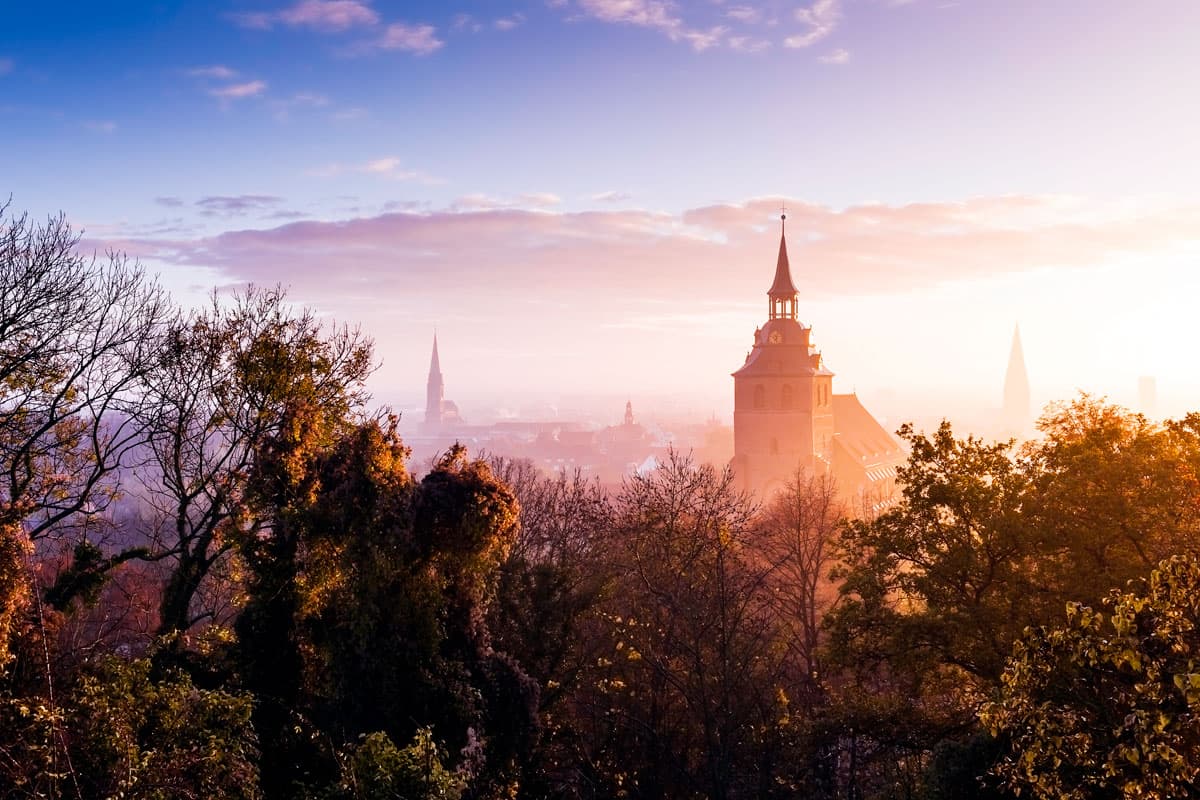
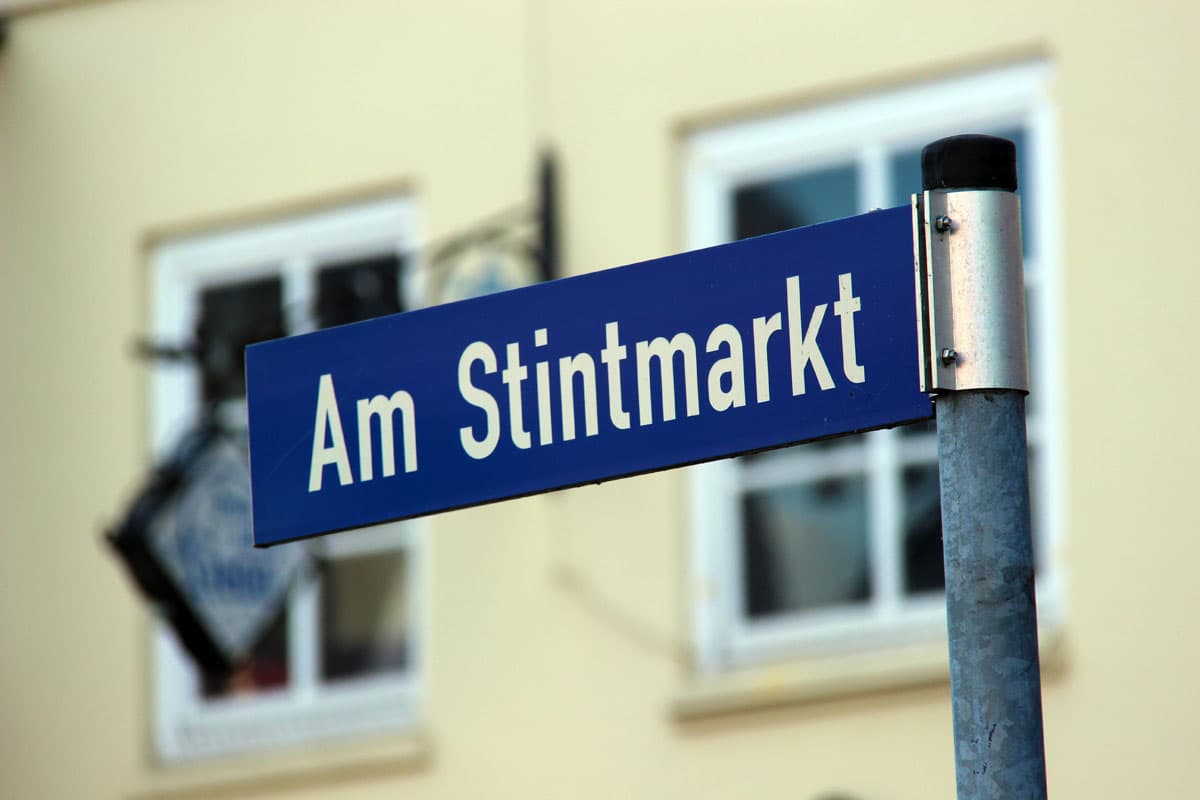
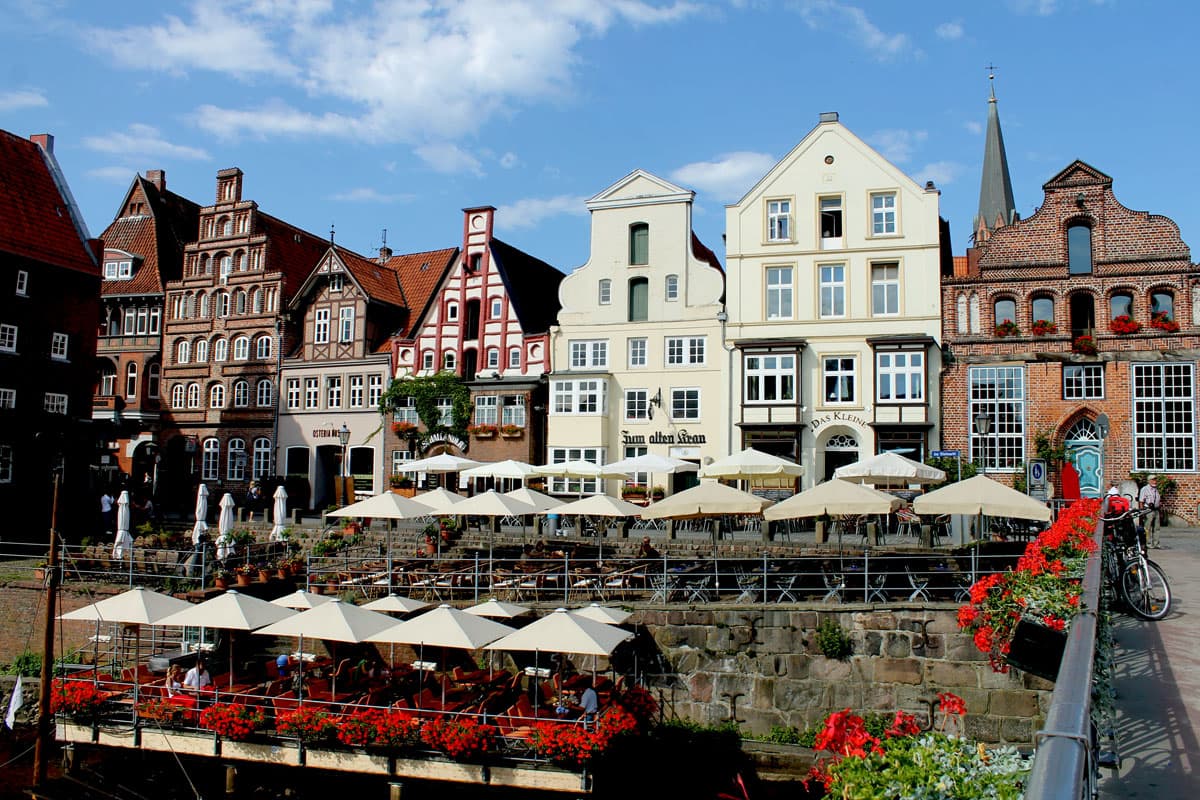
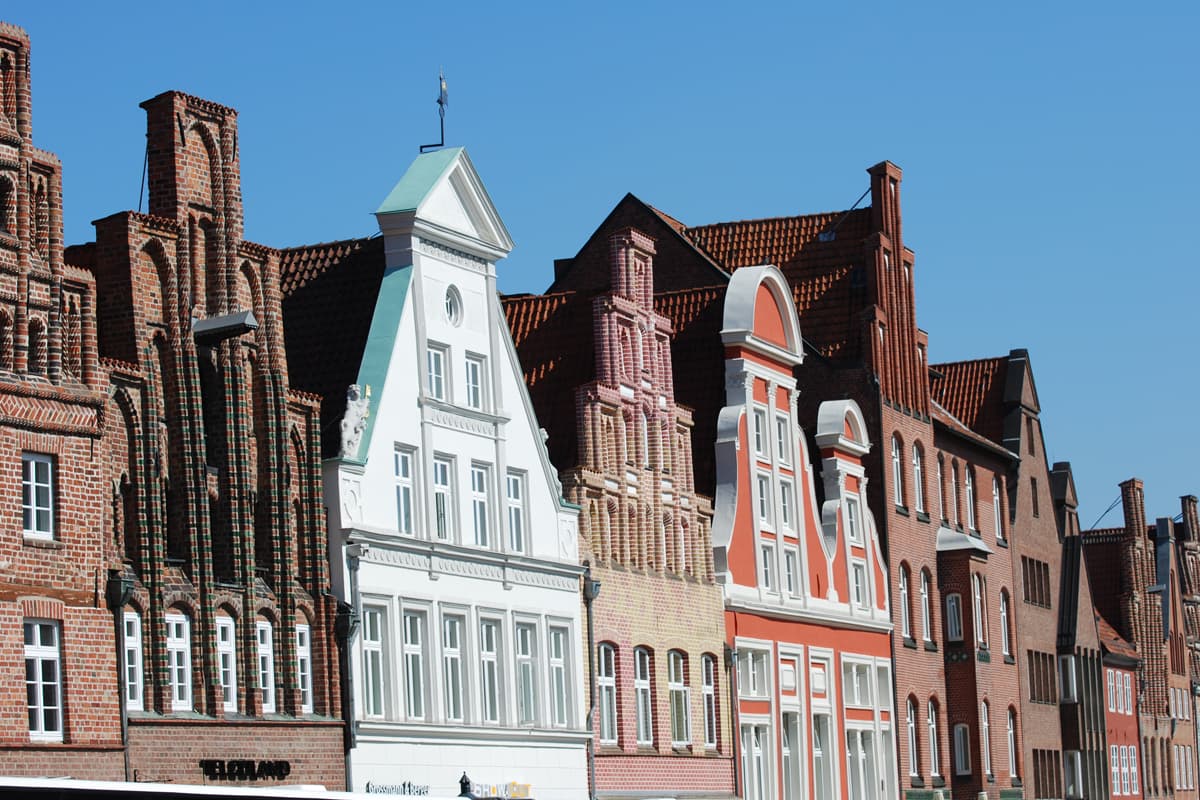
Lüneburg ist nicht einfach nur eine Stadt – es ist ein Erlebnis. Backsteingotik, malerische Altstadtgassen und jede Menge Geschichte treffen hier auf modernes Flair und lebendiges Treiben. Egal, ob du zum ersten Mal vorbeischaust oder die Stadt von einer neuen Seite kennenlernen möchtest – hier findest du alle Tipps für deinen perfekten Aufenthalt.
Stadtführungen und Erlebnisse – Jetzt buchen und Lüneburg erleben
Lust auf eine Entdeckungstour? Lüneburg steckt voller Geschichten, und unsere erfahrenen Guides zeigen dir die spannendsten Ecken. Von historischen Stadtführungen bis zu Themenrouten – hier wird Geschichte lebendig.
Rathausführung buchen
Stadtführung Lustiges Lüneburg mit Ritter Lutz
Oder möchtest du lieber selbst auf Entdeckungstour gehen? Dann schnapp dir unsere Karte und starte deine individuelle Erkundung.
Sehenswürdigkeiten, die du nicht verpassen darfst
Lüneburg hat viele Gesichter – und jedes davon ist einen Besuch wert. Hier kommen unsere Highlights:
Alter Kran: Das Wahrzeichen am Hafen – hier spürst du den Puls der alten Salzstadt.
Stintmarkt: Historische Atmosphäre, leckeres Essen und entspannte Stunden an der Ilmenau.
Wasserturm Lüneburg: 360-Grad-Blick über die Stadt – ein Muss für alle, die Lüneburg von oben sehen wollen.
Salzmuseum: Entdecke die Geschichte des „weißen Goldes“ und warum Lüneburg ohne Salz nicht das wäre, was es heute ist.
Geheimtipps: Für alle, die mehr wollen: der Loreleyfelsen im Wilschenbruch oder das Tor zur Unterwelt im Senkungsgebiet.
Platz am Sande: Einer der ältesten Plätze der Stadt mit beeindruckender Backsteinarchitektur.
Mehr über Lüneburgs Sehenswürdigkeiten
Veranstaltungen in Lüneburg – Dein Erlebnisplaner
Lüneburg feiert gerne – und das spürt man. Von traditionellen Festen bis hin zu spannenden Events:
Lüneburger Stadtfest: Ein Wochenende voller Musik, Kulinarik und guter Stimmung.
Historischer Christmarkt: Weihnachtliche Romantik pur – mit traditionellem Kunsthandwerk und leckeren Spezialitäten.
Theater Lüneburg: Kultur für alle Sinne – ob Oper, Theater oder Konzert.
Rote Rosen-Tour: Entdecke die bekanntesten Drehorte der ARD-Serie und tauche ein in die Welt der "Rosen".
Veranstaltungskalender für Lüneburg
Übernachten in Lüneburg – Wo Träume wahr werden
Von der stylischen Ferienwohnung bis zum gemütlichen Boutique-Hotel – hier findest du garantiert die richtige Unterkunft.
Hotels und Ferienwohnungen in Lüneburg
Kulinarische Highlights – Lüneburg schmecken und genießen
Lüneburg hat auch kulinarisch einiges zu bieten:
Regionale Spezialitäten: Probier dich durch Heidschnuckenbraten oder frischen Stint aus der Ilmenau.
Historische Gaststätten: Urige Restaurants, die Geschichte erzählen.
Cafés am Stintmarkt: Perfekt für eine kleine Auszeit mit Blick auf das Wasser.
Empfohlene Restaurants in Lüneburg
Praktische Tipps für deine Reise nach Lüneburg
Anreise: Einfach per Bahn, Auto oder sogar mit dem Fahrrad erreichbar.
Parken: Zentrale Parkhäuser und nachhaltige Anreiseoptionen stehen bereit.
Öffentliche Verkehrsmittel: Mit dem Stadtbus kommst du bequem überall hin.
Freizeitaktivitäten: Vom Wildpark bis zum Spaßbad SaLü – Langeweile ausgeschlossen!
Häufig gestellte Fragen (FAQ)
Was sind die wichtigsten Sehenswürdigkeiten in Lüneburg? Das historische Rathaus, die imposanten Stadtkirchen und natürlich der Alte Kran am Hafen. Geheimtipps wie das Tor zur Unterwelt oder der Loreleyfelsen sorgen für echte Aha-Momente.
Welche Veranstaltungen sollte man nicht verpassen? Definitiv das Stadtfest im Juni, das Lunatic Festival und den romantischen Christmarkt.
Wo finde ich Drehorte der "Roten Rosen"? Der Stintmarkt und der Marktplatz sind besonders beliebt – perfekt für einen kleinen Serienrundgang.
Wo kann ich in Lüneburg gut shoppen? Die Altstadt lockt mit individuellen Boutiquen, Fachgeschäften und einem tollen Wochenmarkt.
Was sind gute Freizeit-Tipps für Familien? Besuche den Wildpark, das Spaßbad SaLü oder das Salzmuseum – ideal für kleine und große Entdecker.
Dein Lüneburg-Moment wartet!
Lüneburg hat alles, was das Herz begehrt: Geschichte, Kultur, Natur und Genuss. Plane jetzt deinen Besuch, buche deine Tour oder reserviere dein Hotel. Entdecke eine Stadt, die jeden Moment besonders macht.

